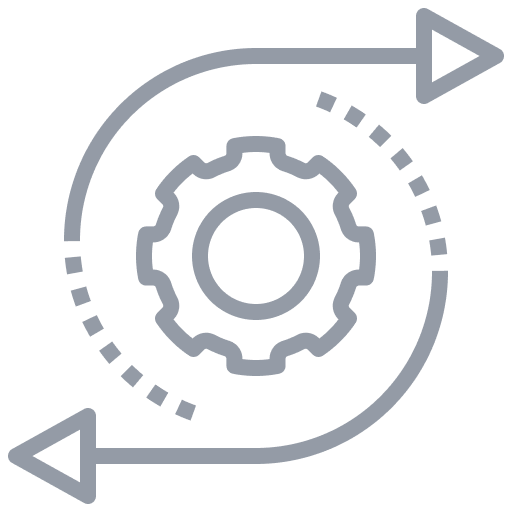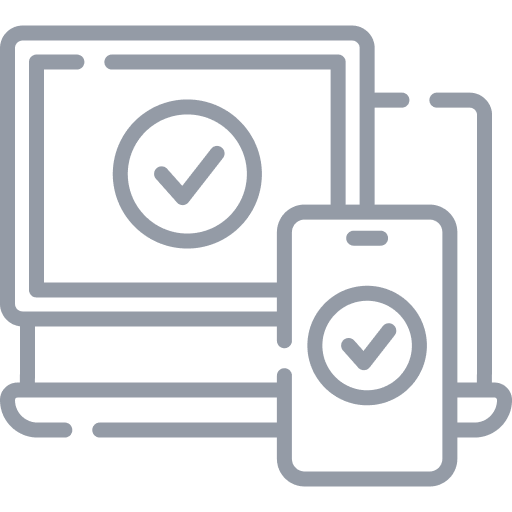Ui/Ux Design
Each and every screen we design and work on, is done with our Partners' convenience in mind, as they are our first and foremost priority. Our UI/UX is sure to set new standards as we understand the application of user-centric design principles better than anyone.

Your Partner in Modern Development
We work with you to build modern, reliable digital products that fit your goals. From apps to custom software, we create solutions that are easy to use, well-designed, and ready to grow with your business.
iOS App Development
We build high-performance iOS applications designed for iPhone, iPad, Apple Watch, and Apple TV. Our team focuses on intuitive UI, robust architecture, and secure performance—helping brands boost engagement, simplify operations, and scale effectively within the Apple ecosystem.
Android App Development
Our Android experts create fast, scalable, and visually appealing apps tailored for all Android devices. From consumer apps to enterprise-grade solutions, we help businesses improve customer experiences, optimize processes, and unlock greater market reach.
React Native App Development
We develop powerful cross-platform apps using React Native—delivering native-like performance while reducing development time and cost. Our solutions help businesses reach both iOS and Android audiences with a single, efficient codebase.
Flutter App Development
Using Google’s Flutter framework, we build beautiful, smooth, and feature-rich apps for mobile, web, and desktop. Our team crafts pixel-perfect UIs and lightning-fast performance to give users a seamless, enjoyable experience on every platform.


Hybrid App Development
We create hybrid mobile apps that combine the flexibility of web technologies with the functionality of native apps. Our hybrid solutions reduce development cost, speed up launch timelines, and maintain solid performance across diverse devices.


Cross-Platform Mobile Apps
Our cross-platform development solutions help businesses launch apps that work flawlessly on iOS and Android using a single codebase. We focus on speed, consistency, and cost-efficient development without compromising quality or user experience.
Ui/Ux Design
Onesttech follows a comprehensive UI/UX Design workflow
We ensure that every aspect of the design process is thoroughly covered, resulting in a visually appealing, user-friendly, and impactful solution that drives business success and exceeds client expectations.

Ideation
In the initial phases, we engage in extensive communication with our clints to understand their vision, objectives, and requirements for the website
We conduct meetings to gain insights into their business goals and the target audience they want to cater to
By delving deep into their project, we ensure that we align our design process with their specific needs, allowing us to create a tailored and effective solution.

Wireframing
Wireframing is a crucial step where we create low-fidelity representations of the website's layout and functionality
These wireframes are intentionally devoid of visual elements, allowing us to concentrate solely on the site's structure and user flow
By taking this approach, we ensure that usability and user experience are prioritized over aesthetics during the initial design phase.

Prototyping
Prototyping takes the wireframes to the next level by providing interactive simulations of the website's user interface
These medium-fidelity prototypes enable us to demonstrate how users will interact with the site, effectively testing the user flows and identifying any potential issues early in the design process
The prototypes also serve as a tangible reference for stakeholders and users to provide feedback and make informed decisions.

Development & Testing
Collaboration between our design and development teams is essential to achieving a seamless and functional end product
We work closely with our skilled developers to ensure the successful implementation of our design ideas.

Launch & Monitor
After successful testing and client approval, we deploy the website to the live server
Our job doesn't end there; we continuously monitor the website's performance and gather user feedback post-launch
By staying attentive to user behavior and any potential issue, we can make timely adjustments and ensure a smooth experience for all visitors.

Iterative Improvements
The design process doesn't end with the website's launch
We believe in continuous improvement and enhancement
By collecting user data, analyzing analytics, and monitoring user feedback, we gain valuable insights into user behavior and preferences
This valuable information guides us in making iterative design updates over time to keep the website fresh, relevant, and aligned with the latest trends and technologies.

Create a software development team with us
FAQ About Ui/Ux Design
Our service works by following a structured process that begins with understanding your requirements, followed by planning, implementation, testing, and delivery. We maintain open communication throughout to ensure your needs are met.
The timeline varies depending on project complexity, but typically ranges from 4-12 weeks. We'll provide a detailed timeline during our initial consultation based on your specific requirements.
Yes, we offer various support packages to ensure your solution continues to function optimally. Our standard support includes 3 months of free maintenance, with options to extend.
We implement rigorous quality assurance processes including code reviews, automated testing, and user acceptance testing. Our team follows industry best practices and maintains high standards throughout development.
Absolutely. We specialize in tailoring our services to meet industry-specific requirements and compliance standards. Our team has experience across multiple sectors including healthcare, finance, education, and retail.


